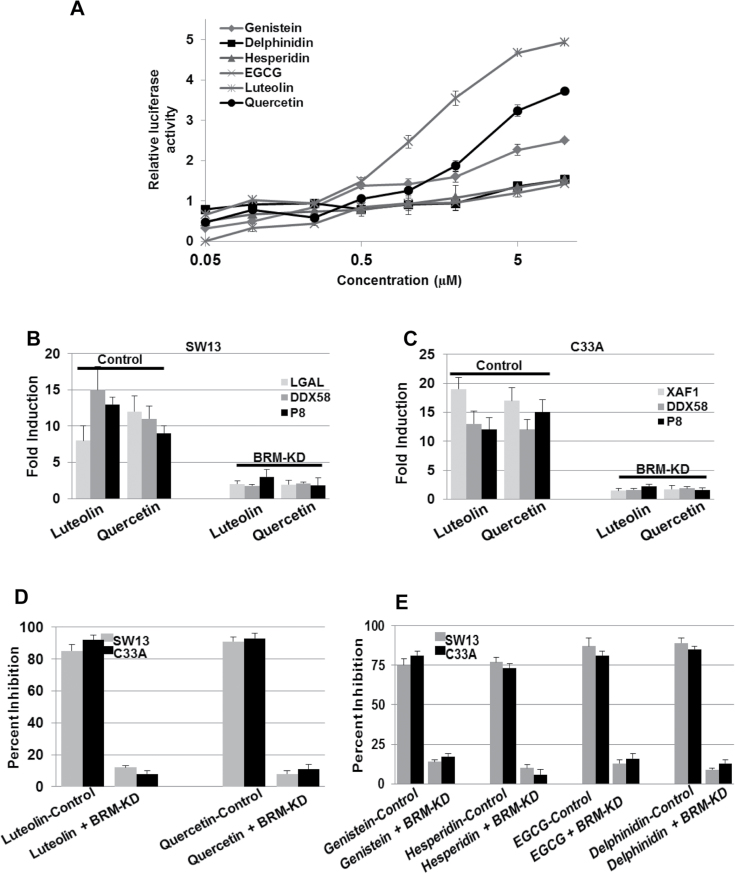Fig. 2.
(A) shows the use of the MMTV-luciferase assay to indirectly measure the potency of flavonoids from the six structural groups at various concentrations. Quercetin and Luteolin show the highest induction of luciferase activity at >5 µM, nearly 11-fold and 15-fold higher, respectively, compared with their respective baseline luciferase levels (~1). (B and C) SW13 and C33A show the induction of BRM-dependent genes in the daughter SW13 and C33A cell lines harboring the scrambled shRNA (control) after treatment with either 3 µM Luteolin or Quercetin for 72h (P < 0.05). In comparison, the induction of these BRM-dependent genes was blunted in daughter SW13 and C33A cell lines that harbored the anti-BRM shRNA (BRM-KD). (D) C33A and SW13 cells were infected with either scrambled shRNA (control) or anti-BRM shRNA (BRM-KD). These cell lines were then treated with 3 µM of either Luteolin or Quercetin for 72h. Compared with C33A and SW13 cell lines transduced with anti-BRM shRNA, the cell lines transduced with the scrambled shRNA elicited significant growth inhibition after Luteolin or Quercetin treatment (P < 0.05). (E) C33A and SW13 cells were transduced with either scrambled shRNA (control) or anti-BRM shRNA (BRM-KD), followed by 72-h treatment with 3 µM of flavonoids from each of the four other structural groups (Genistein, Hesperidin, EGCG and Delphinidin). Compared with C33A and SW13 cell lines transduced with anti-BRM shRNA, the cell lines transduced with scrambled shRNA elicited growth inhibition after treatment with each flavonoid (P < 0.05).

